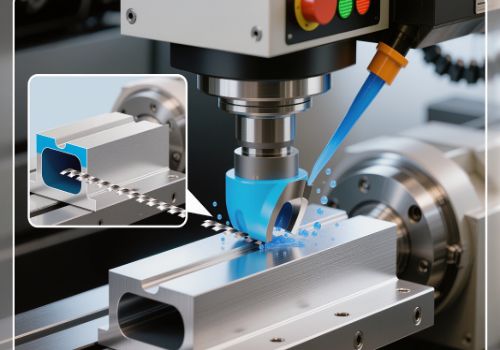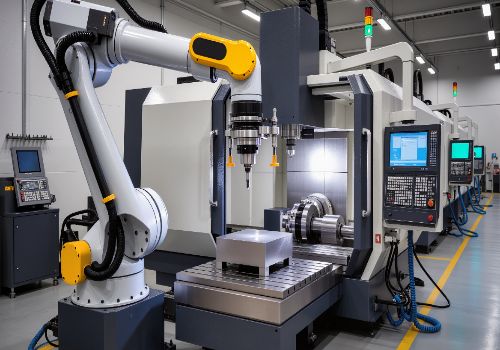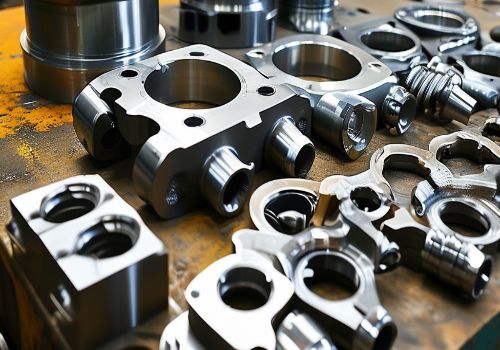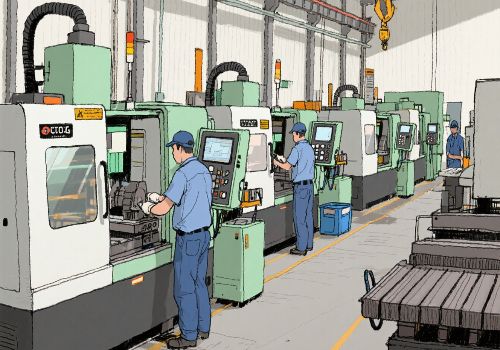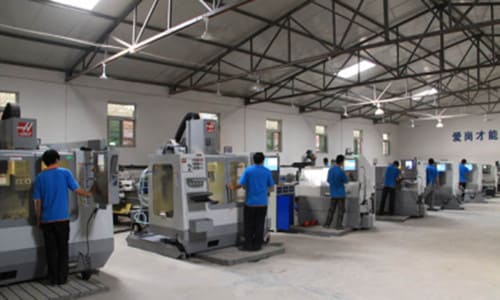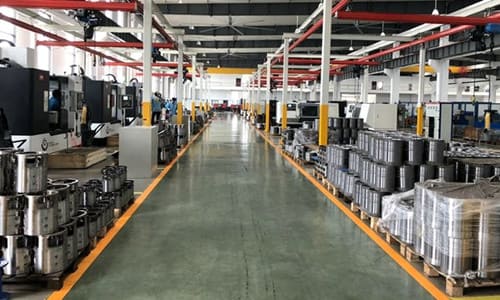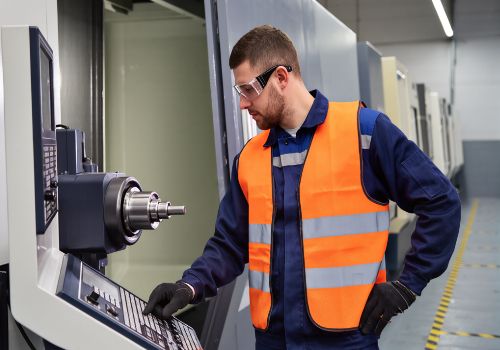Introduction
Precision gear manufacturing represents one of the most demanding applications in CNC machining, where micron-level tolerances and perfect tooth profiles separate functional components from scrap parts. The global gear manufacturing market is projected to reach $300 billion by 2030, driven by aerospace, automotive, and robotics demands.
Modern CNC technology has revolutionized gear production, enabling single-setup machining of complex geometries that previously required specialized mechanical equipment. This comprehensive guide reveals the proven methods for machining precision gears with CNC equipment.
Critical Gear Terminology for CNC Machining
Understanding these terms is essential for precision gear manufacturing:
-
Module (M): Ratio of pitch diameter to number of teeth
-
Pressure Angle (α): Angle between tooth surface and gear wheel plane
-
Helix Angle (β): Angle of tooth spiral relative to gear axis
-
Profile Shift: Modification of tooth thickness and height
-
Runout: Eccentricity of gear teeth relative to rotation axis
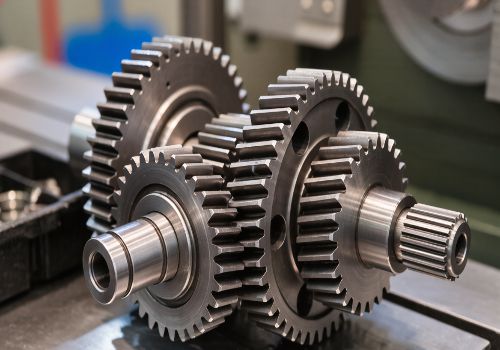
CNC Gear Manufacturing Methods
1. Gear Hobbing with CNC
-
Process: Rotary cutting with helical hob tool
-
Best for: High-volume spur and helical gears
-
Tolerances: Achievable AGMA Class 10-12
-
CNC Requirements: 4-axis simultaneous control
2. Gear Milling with Indexing
-
Process: Individual tooth machining with end mills
-
Best for: Prototypes, large gears, custom profiles
-
Tolerances: AGMA Class 9-11 achievable
-
Tooling: Multi-axis CNC with high-precision rotary table
3. Gear Shaping
-
Process: Reciprocating cutter with synchronized rotation
-
Best for: Internal gears and clusters
-
Tolerances: Excellent profile accuracy
-
Limitation: Lower production rates than hobbing
4. CNC Turning for Gear Blanks
-
Critical preparation: <0.005mm runout on mounting surfaces
-
Material considerations: Stress-relieving before final machining
-
Surface finish: Ra 0.8μm or better for accurate measurement
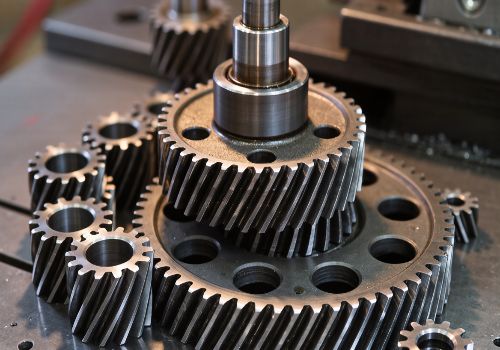
5-Step Precision Gear Machining Process
Step 1: Design and Engineering
-
CAD Modeling: Use specialized gear design software (KISSsoft, GearTrax)
-
Tooth Analysis: Finite Element Analysis (FEA) for load distribution
-
Tolerance Stack-up: Account for thermal expansion and mounting
Step 2: Material Selection and Preparation
| Material | Applications | Heat Treatment |
|---|---|---|
| 4140 Steel | Automotive transmissions | Case hardening |
| 8620 Steel | Aerospace gears | Carburizing |
| Aluminum 7075 | Robotics, light-duty | Anodizing |
| Cast Iron | Industrial machinery | Stress relief |
Step 3: CNC Setup and Tooling
-
Workholding: Hydraulic expansion mandrels for <0.003mm runout
-
Tool Selection: Coated carbide cutters for longest tool life
-
Coolant Strategy: High-pressure through-tool cooling (1000+ PSI)
Step 4: Machining Operations
Step 5: Quality Verification
-
Gear Measurement: CNC gear testers for profile, lead, and pitch
-
Surface Analysis: White light interferometry for microgeometry
-
Functional Testing: Backlash and noise testing under load
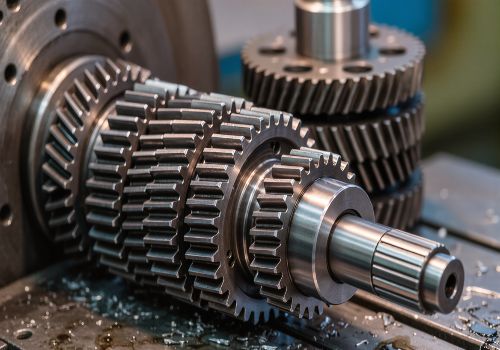
Achieving Precision: Critical Factors
Machine Tool Requirements
-
Positioning accuracy: ±0.001mm or better
-
Rotary table accuracy: ±1 arc-second or better
-
Thermal stability: ±0.5°C machine temperature control
-
Vibration damping: Isolated foundations and active damping
Cutting Tool Considerations
-
Hob geometry: Precision ground relief angles
-
Tool coating: TiAlN or AlCrN for high-temperature resistance
-
Tool inspection: Regular edge condition monitoring
-
Tool balancing: G2.5 or better for high RPM operation
CNC Programming Techniques
-
Trochoidal toolpaths: Constant chip load and reduced cutting forces
-
Adaptive clearing: Efficient material removal between teeth
-
Compensation strategies: Thermal and tool wear compensation

Common Gear Defects and Solutions
| Defect | Cause | Solution |
|---|---|---|
| Profile error | Tool wear or deflection | Reduce feed per tooth, sharper tool |
| Pitch accumulation | Rotary axis error | Rotary calibration, better CNC control |
| Surface chatter | Insufficient rigidity | Optimize toolpath, improve workholding |
| Tooth spacing error | Thermal expansion | Coolant temperature control, compensation |
Advanced Techniques for Highest Precision
Hard Gear Finishing
-
Profile Grinding: Achieves AGMA 14-15 quality
-
Power Honing: Corrects heat treatment distortion
-
Superfinishing: Ra 0.1μm surface finish for quiet operation
CNC Gear Skiving
-
High-speed process: 5x faster than shaping
-
Hard machining: Can cut case-hardened gears
-
Complex geometries: Internal and external gears simultaneously
Additive Hybrid Manufacturing
-
Laser metal deposition: Build gear teeth on existing blanks
-
Powder bed fusion: Create complex internal cooling channels
-
Repair applications: Rebuild worn gear teeth

Case Study: Aerospace Helical Gear Production
Challenge: AGMA 13 quality helical gear with 0.005mm profile tolerance
Solution:
-
5-axis CNC gear milling center with direct-drive rotary tables
-
Multi-stage machining process: Soft cutting, heat treatment, hard finishing
-
In-process measurement: Laser measurement after roughing
-
Climate control: 20°C ±0.5°C machining environment
Results:
-
✅ 100% first-pass quality rate
-
⏱️ 40% reduction in production time vs traditional methods
-
📊 AGMA 14 quality consistently achieved
-
💰 27% lower cost per gear
Gear Measurement and Quality Assurance
-
CNC Gear Testers: Complete profile, pitch, and runout analysis
-
Coordinate Measuring Machines (CMM): 3D verification of tooth geometry
-
Surface Roughness Testers: Quantitative surface finish measurement
-
Optical Comparators: Quick verification of tooth form
Future Trends in CNC Gear Manufacturing
-
AI-powered adaptive control: Real-time adjustment of cutting parameters
-
Digital twin technology: Virtual process verification before machining
-
Ultra-high-speed machining: 50,000+ RPM spindles for finer finishes
-
Sustainable manufacturing: Dry machining and recycling of cutting fluids

Conclusion
Machining precision gears with CNC requires meticulous planning, specialized equipment, and rigorous quality control. By leveraging modern CNC technology, manufacturers can produce gears that meet the most demanding applications in aerospace, automotive, and precision machinery.
The key to success lies in understanding gear geometry, selecting appropriate machining strategies, and implementing comprehensive quality assurance. With the right approach, CNC gear machining can deliver unmatched precision, efficiency, and reliability.
Ready to elevate your gear manufacturing capabilities? [Contact our precision machining specialists] for a comprehensive gear production assessment.

